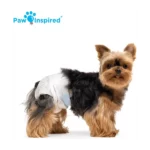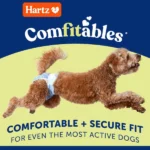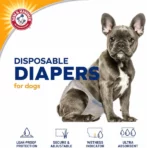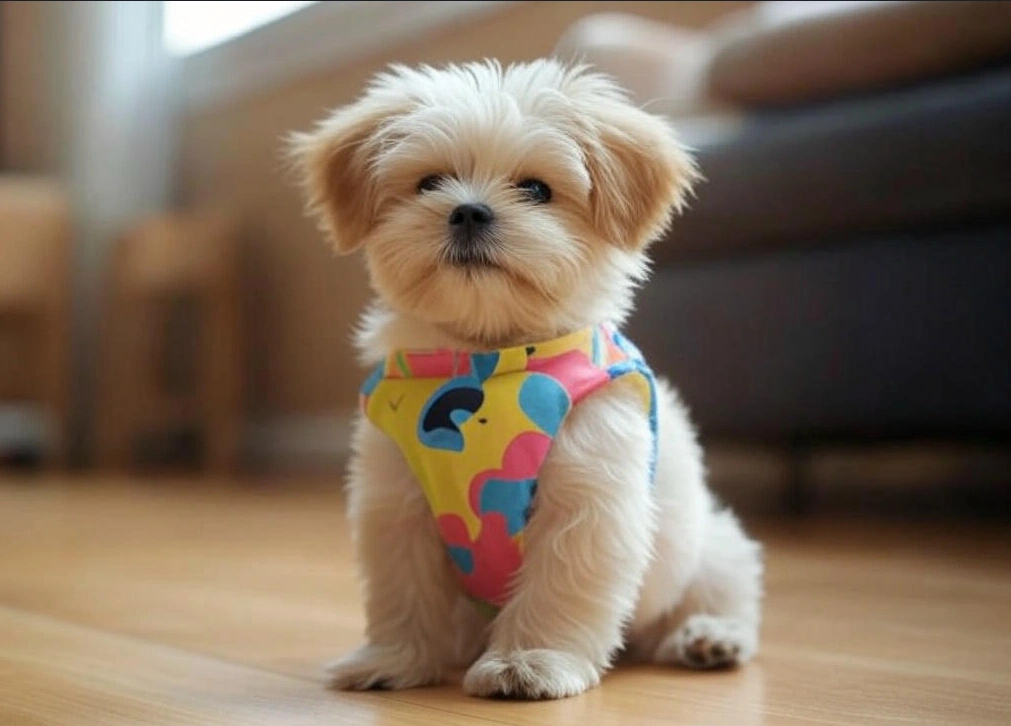House Training Guide with Dog Diapers
Learn how dog diapers protect floors during puppy house training. Tips for new owners to train effectively. Save your home from messes!
Bringing a new puppy home is an exciting time, but house training can be a challenging and messy process. For new puppy owners, dog diapers can be a practical tool to protect your floors from accidents while your puppy learns where to go potty.
This guide provides detailed tips on house training, with a focus on how to effectively use dog diapers as part of the process.
Why Use Dog Diapers During House Training?
Dog diapers are garments designed to catch urine and sometimes feces, offering several benefits during house training:
- Prevent messes: Diapers keep your floors clean by catching accidents, reducing the need for constant cleanup.
- Identify accidents: An accident in the diaper signals that your puppy may need more frequent outdoor breaks or closer supervision.
- Discourage indoor pottying: Puppies may be less likely to go indoors while wearing a diaper, as it can feel uncomfortable or unfamiliar.
- Support in specific situations: Diapers are useful when traveling, introducing your puppy to new environments, or managing excitement-induced accidents.
However, dog diapers are not a replacement for traditional house training methods. They should be used as a complementary tool alongside a consistent routine and positive reinforcement to teach your puppy proper bathroom habits.
When to Use Dog Diapers
Dog diapers are most effective in the following scenarios:
- Near the end of house training: When your puppy is mostly house trained but still has occasional accidents (e.g., one accident a day).
- For dogs comfortable with wearing items: Diapers work best for puppies that don’t mind being handled or wearing garments. If your puppy resists, traditional methods may be more suitable.
- In specific situations: Diapers can help during travel, when meeting new people, or for puppies that have accidents due to excitement or anxiety.
- For male dogs with urine accidents: A Male Wrap is a simpler alternative to full diapers, designed specifically for male dogs that only have urine accidents.
How to Use Dog Diapers Effectively
To make the most of dog diapers during house training, follow these steps:
1. Choose the Right Diaper
- Select a well-fitting, comfortable diaper to ensure your puppy’s comfort and prevent leaks or chafing.
- For male dogs with only urine accidents, consider a Male Wrap, which is easier to put on and take off.
- Check sizing guides and measure your puppy to find the right fit.
2. Introduce the Diaper Positively
- Puppies may be hesitant about wearing a diaper, so make the experience positive.
- Use treats to reward your puppy when you put the diaper on and while they wear it.
- If possible, have a second person assist initially to keep the process calm and smooth.
- Reward your puppy for staying calm while wearing the diaper. If they strongly dislike it after a few tries, consider discontinuing use and focusing on other training methods.
3. Increase Supervision and Outdoor Breaks
- If your puppy has an accident in the diaper, it’s a sign they need more structure. Limit their freedom temporarily by using a crate, exercise pen, or gating them to a smaller area.
- Increase outdoor potty breaks to as often as once an hour during the day, especially after meals, playtime, or naps.
- Reward your puppy with extra tasty treats when they successfully go potty outside to reinforce the desired behavior.
- If accidents happen near the door, consider teaching your puppy to use a potty training bell to signal when they need to go out.
4. Clean and Monitor Regularly
- Check the diaper frequently and clean or replace it as needed to prevent skin irritation or rash.
- Have spare diapers on hand to ensure your puppy is always comfortable.
- Use an enzymatic cleaner for any accidents that occur outside the diaper to eliminate odors that might attract your puppy back to the same spot.
5. Combine with Traditional House Training
- Dog diapers should be used alongside a comprehensive house training program. Key elements include:
- Frequent outdoor breaks: Take your puppy outside at least every two hours and immediately after waking up, eating, drinking, or playing.
- Positive reinforcement: Use treats, praise, or an excited tone (e.g., “Good potty!”) to reward your puppy for eliminating in the correct spot.
- Interrupt accidents: If you catch your puppy in the act of having an accident indoors, firmly say “no” and take them outside immediately. Do not scold them after the fact, as they won’t understand.
- Consistent routine: Feed, play, and take your puppy outside at the same times each day to establish predictable habits.
Additional House Training Tips
To support your puppy’s house training journey, consider these broader strategies:
- Establish a routine: Puppies thrive on consistency. A regular schedule for feeding, play, and potty breaks helps them learn when and where to go.
- Watch for signs: Learn to recognize when your puppy needs to go potty, such as sniffing, circling, or whining.
- Use crate training: Crates can help teach your puppy to hold it, as dogs naturally avoid soiling their sleeping area. Use the crate only when you can’t supervise directly, and ensure it’s a positive, safe space with a bed and chew toys.
- Understand bladder control: Puppies can typically control their bladder for about one hour per month of age (e.g., a 2-month-old puppy can hold it for about 2 hours). Don’t expect them to hold it longer than this.
- Clean thoroughly: Use a high-quality enzymatic cleaner, such as Urine Away, to remove all traces of urine or feces. Lingering odors can attract your puppy back to the same spot.
- Be patient: Accidents are a normal part of the process. House training can take days to weeks, depending on your puppy’s age, breed, and past experiences.
Real-World Success Stories
Pet owners have found dog diapers helpful in various scenarios:
- Young puppies: Owners of puppies as young as 11 weeks used diapers until their pets were fully vaccinated and could safely go outside.
- Excited dogs: A 3-year-old cocker spaniel that had “excited” pee during visits benefited from wearing a diaper to manage accidents.
- Final training stages: Diapers reduced stress for owners of puppies that were almost fully trained but still had occasional accidents.
- Encouraging signaling: Some owners used diapers to encourage their puppies to signal when they needed to go out, such as an 8-month-old female learning to communicate her needs.
Important Considerations
- Not for every puppy: Dog diapers may not suit all dogs. If your puppy strongly resists wearing them or becomes stressed, focus on traditional house training methods instead.
- Avoid over-reliance: Diapers are a temporary tool. The goal is to teach your puppy to eliminate in the appropriate place without needing diapers long-term.
- Positive reinforcement is key: Never strike, yell, or rub your puppy’s nose in a mess, as this can traumatize them and make training harder. Focus on rewarding good behavior and preventing accidents through supervision and routine.
Table: House Training Tools and Their Uses
| Tool | Purpose | Best For |
|---|---|---|
| Dog Diapers | Catch accidents, protect floors, discourage indoor pottying | Puppies nearly trained, dogs comfortable with wearing items, specific situations |
| Male Wrap | Catch urine accidents for male dogs, easier to use than full diapers | Male dogs with only urine accidents |
| Crate | Teach bladder control, provide safe space when unsupervised | All puppies, especially during early training stages |
| Potty Training Bell | Teach puppy to signal need to go out | Puppies having accidents near doors |
| Enzymatic Cleaner | Remove odors to prevent repeat accidents in same spot | Cleaning up any accidents, indoors or out |
Conclusion
Dog diapers can be a valuable tool for new puppy owners, protecting floors from accidents while your puppy masters house training. By using diapers strategically—alongside a consistent routine, frequent outdoor breaks, and positive reinforcement—you can reduce stress and cleanup while helping your puppy learn quickly and confidently. With patience and the right approach, your puppy will soon be fully house trained, and your floors will stay pristine.






